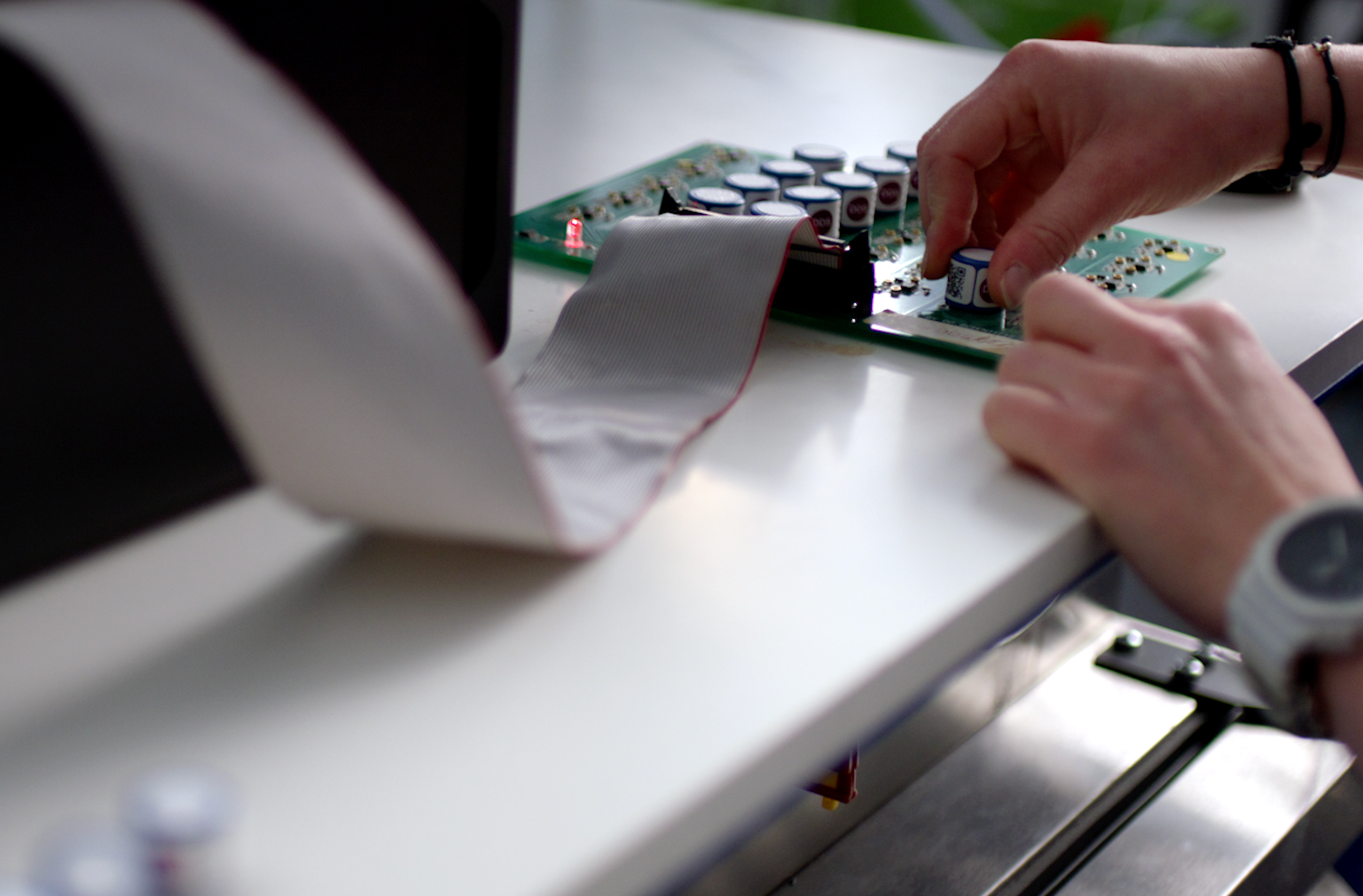Common detection and monitoring applications in the medical sector include:
As healthcare providers seek to improve outcomes for patients with pulmonary complications, Inhaled Nitric Oxide (INO) therapy plays a vital role in the management of conditions such as neonatal respiratory distress and pulmonary hypertension.
The controlled delivery of Nitric Oxide directly to the lungs requires precise monitoring to ensure therapeutic effectiveness while preventing exposure to harmful levels of NO or its by-product, Nitrogen Dioxide (NO₂).
Our advanced sensor technologies deliver accurate and stable detection of both NO and NO₂ as well as Oxygen (O2) to support safe, consistent, and reliable operation in INO therapy systems.
As government bodies, employers and healthcare providers look to reduce levels of smoking, breath analysis can play a key role in the enforcement of medical smoking cessation programmes by giving clear, measurable feedback on consumption.
Measurement of Carbon Monoxide (CO) levels in exhaled breath can provide an immediate objective indicator of smoking status, which can be used to motivate behavioural change, enforce policy and guide treatment decisions.
Our sensor model developed specifically for this application provides rapid and reliable CO measurement with minimal cross-sensitivity to Hydrogen (H2). This enhanced performance coupled with competitive price point enables OEMs to deliver fast, accurate and reliable devices at a commercially attractive price point.
The measurement of NO levels in exhaled breath provides clinicians with a non-invasive method of assessing airway inflammation. This Fractional Exhaled Nitric Oxide analysis, or FeNO as it is more commonly known, has become an important tool in the diagnosis, monitoring and management of asthma and other respiratory conditions.
Modern handheld FeNO devices are increasingly helping medical professionals to guide treatment decisions, influence medication and track progress of respiratory patients over time.
As a pioneer in the field of FeNO sensors, DD-Scientific have the leading electrochemical sensors in the field, delivering ultra-accurate NO response with minimal cross-sensitivity to H2.
Devices used in critical respiratory care settings require precise and reliable O2 monitoring to protect vulnerable patients and support clinical decision-making. Accurate monitoring of O2 concentration during treatment ensures that individuals receive the exact levels prescribed, preventing complications associated with under - or over - oxygenation.
Optimised specifically for non-anaesthesia medical ventilators, our medical O2 sensors provide the stable and repeatable response which respiratory devices need in order to deliver the best patient outcomes.
With multiple connectors available including Molex and Jack fitting, our medical O2 sensors have the robustness and versatility to cope with even the most arduous of medical respiratory applications.
Accurate O2 monitoring is vital for both acute therapy and long-term concentrator use, where consistent performance directly affects patient outcomes. Whether supporting hospital-based respiratory care or home-care systems for chronic conditions, precise O2 measurement helps ensure that patients receive the prescribed therapy safely and effectively.
Our medical O2 sensors provide the dependable measurement, fast response and long-term stability needed to support patient safety and device reliability.
With multiple connectors available including Molex and Jack fitting, our medical O2 sensors have the performance and value proposition to suit a variety of high-quality O2 delivery devices.
Greater awareness of digestive issues and personal gut health is driving increased use of breath testing as a fast and accurate method of gaining insights into a patient’s digestive function.
H2 levels in exhaled breath are a key biomarker for conditions such as lactose intolerance, Small Intestinal Bacterial Overgrowth (SIBO), and carbohydrate malabsorption, making accuracy essential for effective diagnosis and treatment planning.
We have drawn upon our extensive experience in industrial H2 monitoring and detection to develop a medical sensor which provides accurate, stable and repeatable results without cross-sensitivity to CO. This step forward in performance and longevity helps instrument OEMs deliver even greater accuracy in the next generation of their instruments.
The monitoring of potentially hazardous gases in medical facilities and systems is critical for the protection of hospital staff and patients alike.
With modern sterilisation, disinfection and decontamination processes frequently relying on gases such as Ethylene Oxide (ETO), Ozone (O3) and NO2, there is an increasing need to monitor medical facilities for leakage, to prevent overexposure and ensure safe room re-entry after sterilisation cycles.
At DD-Scientific, we have been making ETO, O3 and NO2 sensors for a range of industrial safety applications for many years. We have leveraged this experience in the development of our medical range, resulting in high-performance, fast-responding sensors which enable instrument manufacturers to outperform their competitors in medical applications.

Can't find the medical sensor you were looking for?
We pride ourselves on our fast response to customer needs and changing markets so if your current sensor selection is not up to the demands of your application or is holding you back commercially we would love to hear from you.
Our medical range is evolving and we have a number of other medical sensor products in development which look to go beyond the capabilities of those currently available from others.
Get in touch today to discuss your requirements in more detail with one of our application specialists.













